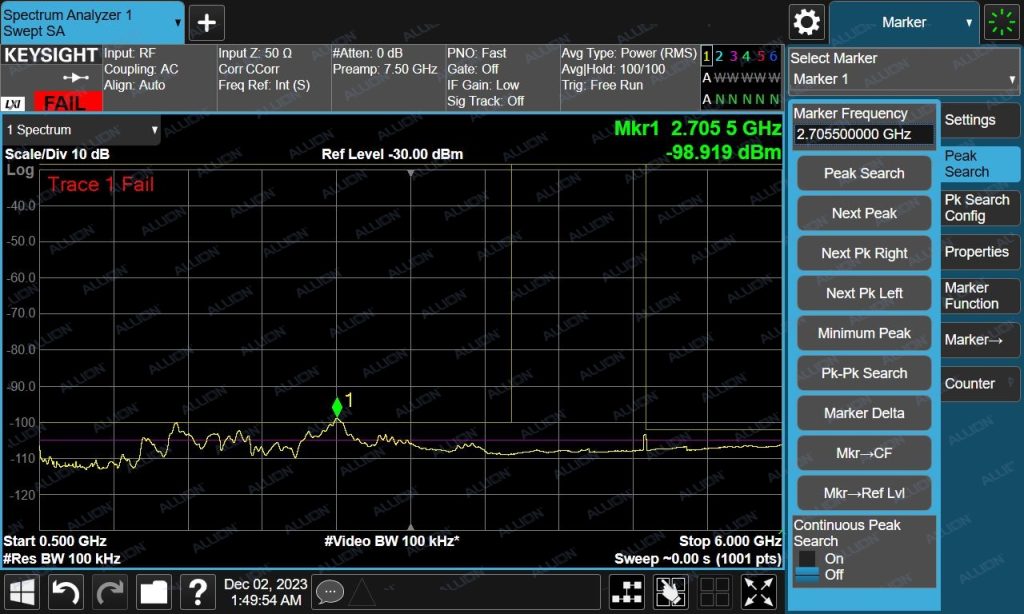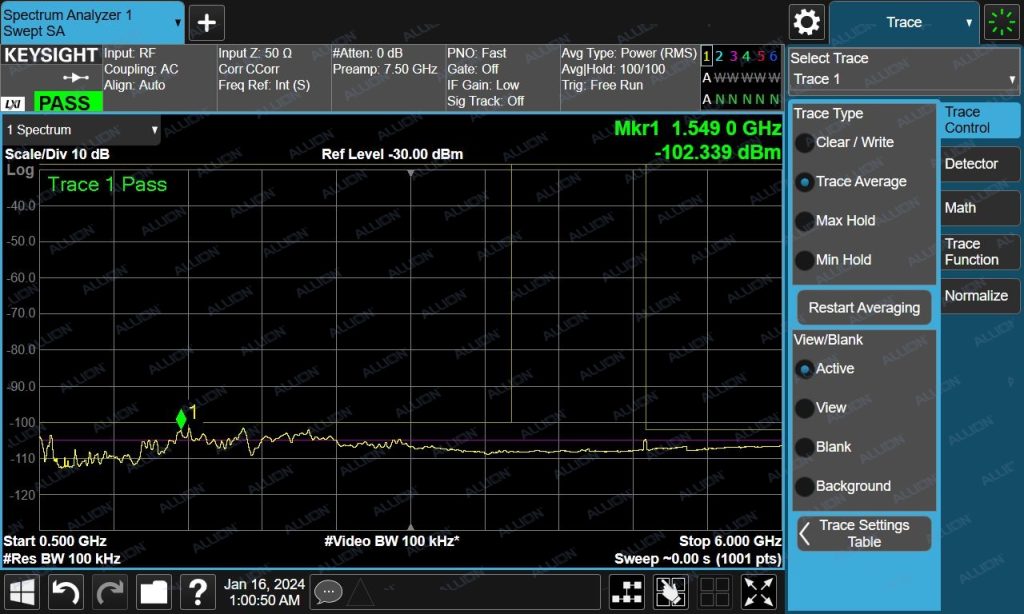Application Environment and Customer Needs
The introduction of USB-C has not only significantly increased the prevalence and functionality of USB devices but has also raised the design requirements for these devices. In addition to the traditional plug-and-play features and universal drivers provided by Windows OS, USB-C supports 15W power delivery and USB Power Delivery (USB PD) technology, further expanding the application range of USB devices. However, these enhanced features have also introduced design challenges, particularly in managing radio frequency interference (RFI).
USB-C Application Environment and Needs
- Expanded Functionality and Popularity
The widespread adoption of USB-C is primarily due to its ability to provide higher power delivery and data transfer speeds. The 15W power capability enables more devices to be charged or powered through USB-C, while USB PD technology allows for bidirectional power delivery and power negotiation between devices, further enhancing its flexibility and versatility. Additionally, the multifunctional USB-C interface supports various functions such as video output and audio transmission, leading to its application in more devices. - Design Challenges
The incorporation of more features and higher performance has increased the complexity of USB-C design. Particularly when working alongside other wireless RF devices, USB-C devices need to effectively manage RF interference, including interference from the USB device itself and from other RF devices, such as Wi-Fi and Bluetooth equipment.
Customer Issues and Challenges
Before the advent of USB-C, the interference caused by USB speeds on wireless RF devices did not receive sufficient attention. However, as USB speeds increased—particularly in the 5Gbps and 10Gbps modes—this issue became more pronounced. This interference mainly affects wireless RF devices operating at 2.4 GHz and 5 GHz, potentially leading to degraded performance of USB devices or even momentary disconnections. Simultaneously, wireless RF devices can also experience interference, resulting in reduced performance, smaller signal range, and unstable connections.
Problem Description
Allion has dealt with a typical case where the customer’s product is a laptop equipped with a USB-C interface, as well as Wi-Fi and Bluetooth functionality. This model supports USB speeds of 5Gbps and 10Gbps; however, when the Wi-Fi and Bluetooth functions are enabled, the performance of the laptop’s USB-C interface significantly drops, achieving only slightly above USB 2.0 (480Mbps) transmission speeds. Additionally, the Wi-Fi and Bluetooth connections become unstable, frequently experiencing delays or momentary disconnections. The customer, having a long-term partnership with Allion, sought assistance from our professional team to resolve these issues. The main problems and challenges faced by the customer are as follows:
- Performance Degradation: With Wi-Fi and Bluetooth enabled, the actual transmission speed of the USB-C interface significantly decreases from 5Gbps or 10Gbps to near USB 2.0 speeds. This not only impacts data transfer efficiency but also limits the performance of high-bandwidth applications.
- Unstable Wireless Connections: The instability of Wi-Fi and Bluetooth connections is another serious issue. When the USB-C interface conducts high-speed data transmission, wireless connections frequently experience delays or momentary disconnections, greatly affecting user experience.
- Design and Compatibility Issues: For designers and engineers, effectively managing and reducing RF interference when designing and implementing USB-C interfaces presents a significant challenge. This is especially true in complex systems that integrate multiple functions (such as USB, Wi-Fi, and Bluetooth), where ensuring compatibility and stability becomes more difficult.
- Response Strategies and Costs: Addressing the aforementioned issues may require additional design and engineering measures, such as improving shielding and filtering designs and conducting stricter RFI testing. These measures will increase design and production costs and necessitate effective testing and adjustments early in the product development phase.
Actual Impact
Product issues not only affect performance and stability but can also negatively impact the customer’s brand reputation. The overall product experience directly influences market competitiveness, and frequent connection issues and performance degradation can lead to reduced user satisfaction, increased return rates, and loss of users.
Solutions
To address the customer’s issue of USB-C interfaces interfering with wireless RF signals, Allion identified several key factors through analysis and proposed corresponding solutions.
Problem Analysis:
- Impedance Mismatch and Signal Skew:
-
- The primary potential causes for RFI test failures include impedance mismatch of components on traces, excessive PCB vias, and unequal trace lengths. These issues can lead to signal skew, creating common-mode signals that affect RFI test results.
- Insufficient Overall Shielding of USB-C Devices:
-
- The shielding design of USB-C devices fails to effectively block signal interference, resulting in USB operation interfering with nearby wireless RF devices.
- Signal Leakage from USB-C Connectors:
-
- Although the shielding of USB-C connectors has improved, USB signals can still leak between the connector pins, interfering with wireless RF signals, especially in high-speed modes (such as 5Gbps or above).
- Proximity of Wi-Fi and Bluetooth Antenna Traces to USB Traces on the PCB:
-
- The proximity of Wi-Fi and Bluetooth antenna traces to USB traces on the PCB causes mutual interference, impacting the stability of wireless signals.
Solutions
Based on the analysis of the issues, we offer the following recommendations for the customer to make adjustments.
1. Improve Shielding Design
Objective: Enhance the shielding effectiveness of the USB-C interface to reduce interference with wireless RF devices.
Recommended Actions:
- Strengthen Shielding Materials: Use high-efficiency shielding materials to cover the USB-C interface and reduce external interference.
- Improve Shielding Structure: Design a robust shielding structure that ensures good contact with the PCB and prevents easy signal leakage from the USB-C interface.
- Enhance Grounding: Improve the grounding effectiveness of the shielding structure, strengthen the USB-C ground, and reduce impedance mismatch between the PCB ground and USB-C ground to lower interference.
2. Optimize Filtering Measures
Objective: Add filters in the design to suppress high-frequency noise and interference.
Recommended Actions:
- Add EMI Filters: Install EMI filters on the USB-C connector and its associated signal lines, and equip trace Tx± with common mode chokes (CMCC) to suppress common-mode signals generated by Tx± and reduce high-frequency noise.
- Design Filtering Circuits: Integrate filtering circuits to eliminate unnecessary high-frequency signals, reducing interference with wireless RF.
3. Adjust Design
Objective: Consider the collaborative operation of USB-C and wireless functions in the product design, making necessary adjustments and optimizations.
Recommended Actions:
- Reasonable Antenna Layout: Ensure that Wi-Fi and Bluetooth antennas maintain an appropriate distance from USB traces to avoid interference.
- Optimize PCB Layout and Design: Plan the positions of USB and wireless modules to avoid placing high-frequency signal lines too close to sensitive signal lines. Reduce the number of PCB vias to prevent signal skew that could lead to common-mode signals, and ensure trace lengths are equal to minimize signal skew.
- Design Isolation Areas: Create isolation areas for the USB-C and wireless modules to reduce mutual interference.
4. Rigorous RFI Testing
Objective: Conduct comprehensive electromagnetic interference testing to ensure that high-speed USB-C transmissions do not interfere with wireless functions.
Recommended Actions:
- Follow Standard Testing Procedures: Conduct tests according to the USB-IF’s USB 3.2 RFI System-Level Test Procedure.
- Test Compliance Mode: Ensure that the USB-C device enters Compliance Mode and emits the CP0 pattern to meet interference standards.
- Conduct Iterative Testing: Perform multiple RFI tests and adjustments to ensure the product’s reliability in actual use.
After the customer implemented the above recommendations, the product successfully passed testing and performed normally in actual use, resolving previous signal interference issues. The improvements not only enhanced the product’s performance and stability but also improved the user experience, ensuring that USB-C devices perform well during high-speed transmissions and wireless functionality.


Time to Market with Quality! High-Quality Service to Create Value for You
Faster, Easier, Better!
When facing RF interference issues caused by USB-C interfaces, Allion provides solutions guided by the core principle of “Faster, Easier, Better!” Here are the specific advantages:
Faster
- Rapid Diagnosis and Repair: Our services can quickly identify and analyze issues with the USB-C interface and its associated circuits, promptly providing improvement recommendations. This means that the process of diagnosing and solving problems is faster than traditional methods, allowing for quick responses to interference issues and reducing time to market.
- Immediate Testing and Validation: We offer an efficient RFI System-Level testing process that can rapidly complete electromagnetic interference tests and iterate, ensuring compatibility of the USB-C interface during high-speed transmissions. With advanced testing equipment and methodologies, we can quickly validate the effectiveness of design improvements.
- Comprehensive Validation Environment: As a USB Association-certified laboratory, Allion provides a compliant validation environment and debugging assistance tools, including shielded rooms, spectrum analyzers capable of detecting specific frequency noise, noise detectors, signal amplifiers, and relevant testing fixtures.
Easier
- Comprehensive Solutions: Our one-stop service includes shielding design optimization, filter implementation, RFI testing, and design considerations, allowing customers to address all aspects of the issue without handling them separately. This simplifies the entire improvement process, enabling customers to easily tackle complex RF interference challenges.
- Professional Support and Consultation: The Allion expert team possesses rich experience and expertise, offering clear advice and guidance to help customers understand and implement improvement measures. This makes the implementation of solutions simpler, reducing the learning and operational costs for customers.
BetterBetter
- Enhanced Performance and Stability: By improving shielding design, optimizing filtering measures, and conducting rigorous RFI testing, our services can significantly enhance the performance of the USB-C interface and the stability of wireless functions. This not only reduces interference but also improves the overall user experience.
- Compliance with Industry Standards: Allion’s solutions adhere to the latest USB-IF standards and testing procedures, ensuring that products meet industry regulations. This helps customers maintain competitiveness in the market and gain broader user recognition.
- Continuous Improvement: We are committed to providing ongoing improvements and support, continually updating technologies to keep our solutions forward-looking. This ensures that our customers’ products can maintain high performance and reliability over the long term, ready to meet future challenges.
As a USB-IF recognized third-party certification laboratory, Allion not only offers high-quality testing capabilities but also provides consultancy services for problem analysis and solution provision, helping you overcome challenges and achieve your product goals.
If you have any questions or requirements, please contact us.






































